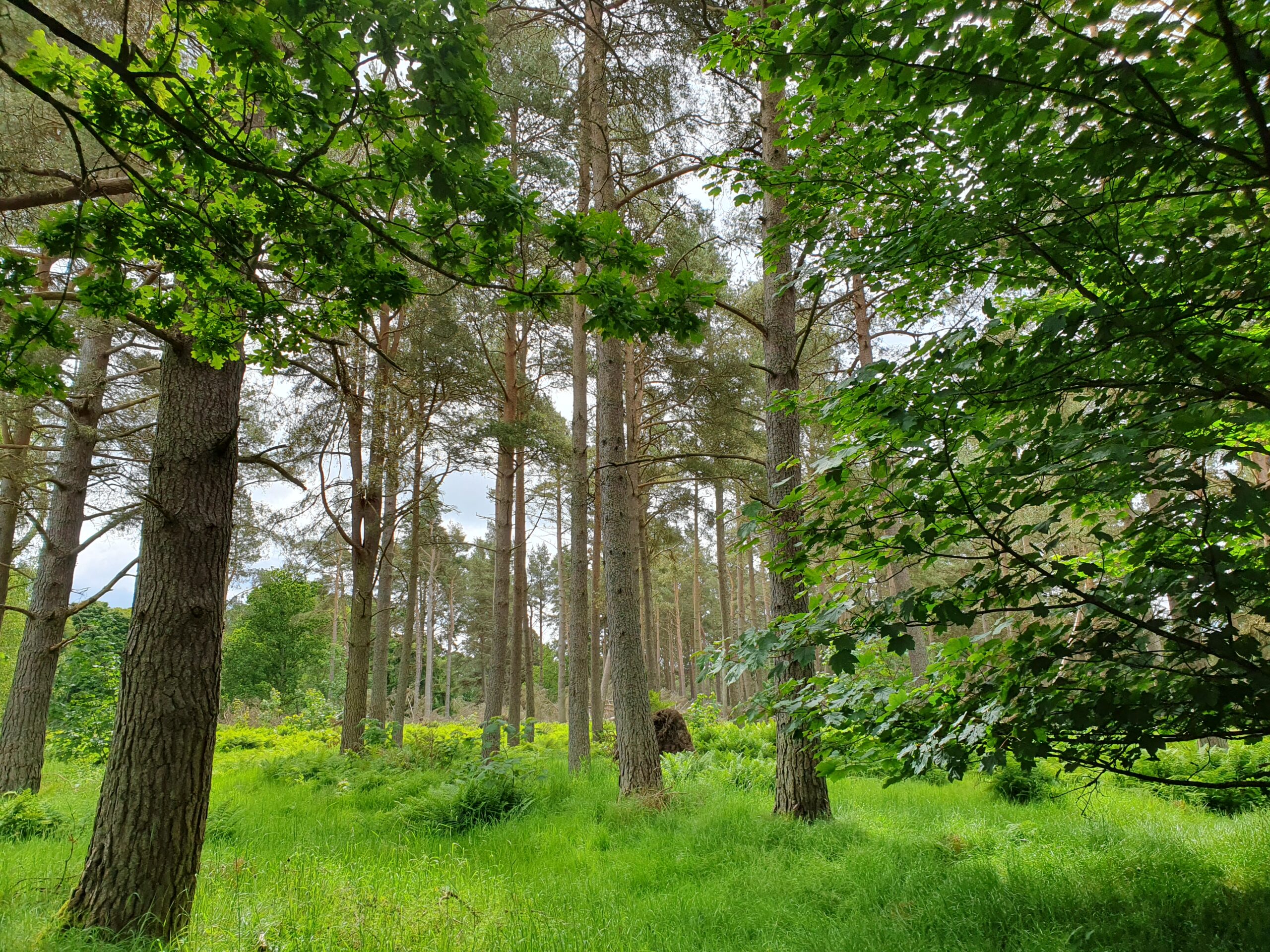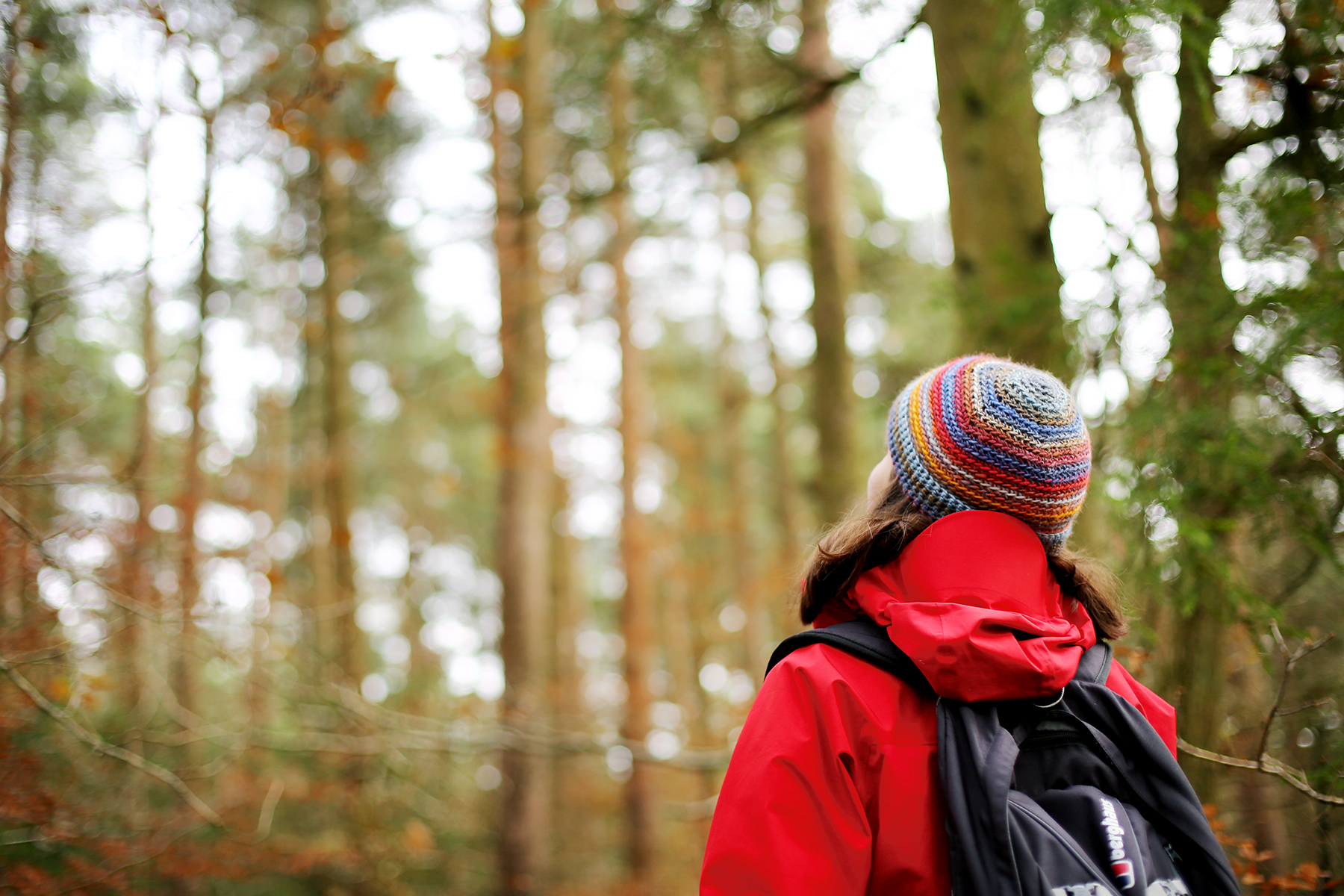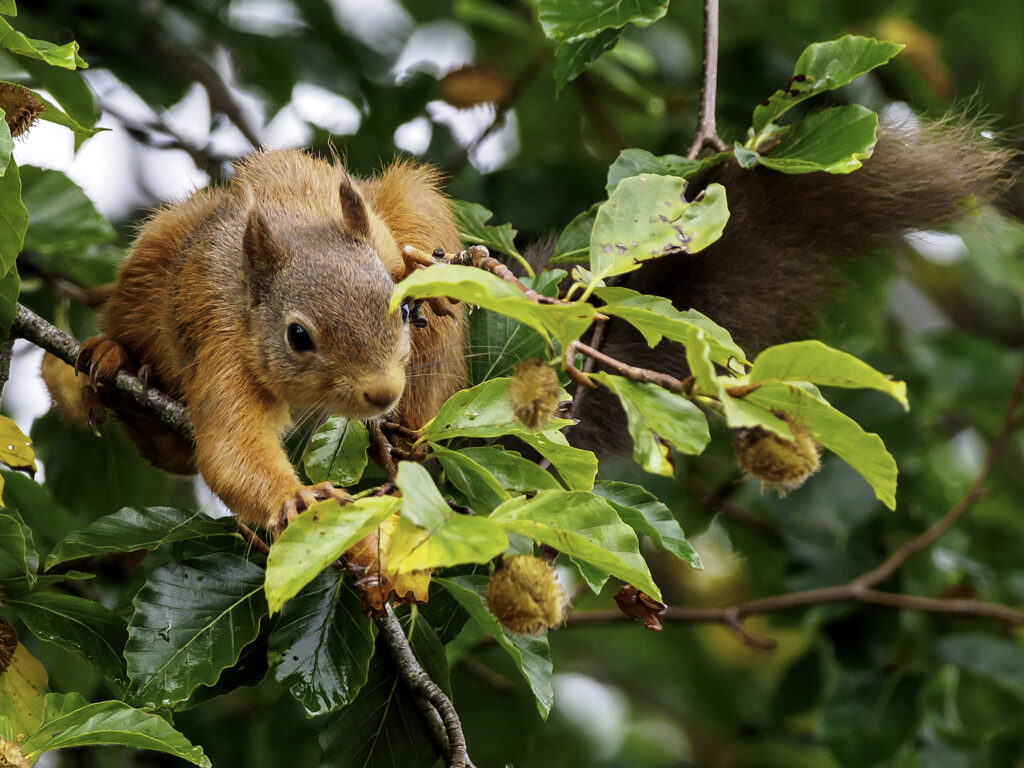As we approach The Great Scottish Squirrel Survey 2025, we’re sharing our top tips for how to spot red squirrels.
Find the right location
The first step is to make sure you’re in squirrel-friendly habitat. Red squirrels can live in coniferous or broadleaf woodland, and they like areas with a mixture of trees too. So areas of dense pine, hazel, oak or beech trees are a good place to start. Check out the map on our red squirrels information page for some key red squirrel sighting locations across Scotland.

Mixed woodland by Katie Berry.
However, red squirrels aren’t particularly fussy and can be found in gardens and urban parks with sufficient tree cover, particularly in the Highlands and the North East, so keep an eye out for city squirrels too!
Squirrels don’t hibernate and are active all year round, but dry, calm autumn early mornings or later afternoons are some of the best to go out squirrel spotting, as this is when they’re most active gathering food for over winter. Their coats are also at their most vibrant at this time of year, and their ear tufts are prominent.
Look for clues
Next you should look for clues that squirrels have been in the area. They tend to stay up in the trees, but do bounce around on the forest floor looking for (and sometimes eating) food. Check the ground for chewed up cones, or teeth marks in mushrooms! In snowy weather you can also look for paw prints.

Chewed cones by Gwen Maggs.
If you are looking up to the trees, you may be able to find a drey (squirrel nest). Dreys are similar to birds’ nests, resembling an untidy ball of sticks with a soft lining of mosses, leaves and grasses.
And lastly, don’t forget to listen. Often you can hear a squirrel before you see it! You might hear their claws scrabbling around tree trunks, food being nibbled and then dropped, or even a chattering, “chucking” sound.
Wait
The most important step when watching squirrels or any wildlife is to become one with your surroundings. Being still and quiet in a landscape for about 20 minutes allows nature to return to how it was before you arrived. Wear neutral colours, shoes that are gentle underfoot and soft clothing so as not to make a noise. There are lots of wildlife hides you can visit in Scotland, set up for squirrel watching and photography, which give you amazing close-up views without causing disturbance.

Looking for squirrels by Keilidh Ewan.
A note on feeding
One way to get really good views of red squirrels, or to encourage them into your gardens, is by putting out extra food or special squirrel feederboxes. This can give them an extra helping hand, especially when natural food sources are hard to find, but there are risks to feeding red squirrels, and you should never allow your local squirrels to become reliant on food you put out. Putting out a mixture of food, not too much at one time, and keeping the area clean, is best. You can find more information about best practice for feeding squirrels on our supplementary feeding guide from the Publications page.
And finally…
Of course, if you see a squirrel (of either species!) remember to submit it to our website: scottishsquirrels.org.uk/squirrel-sightings/

Red squirrel by Raymond Leinster.

